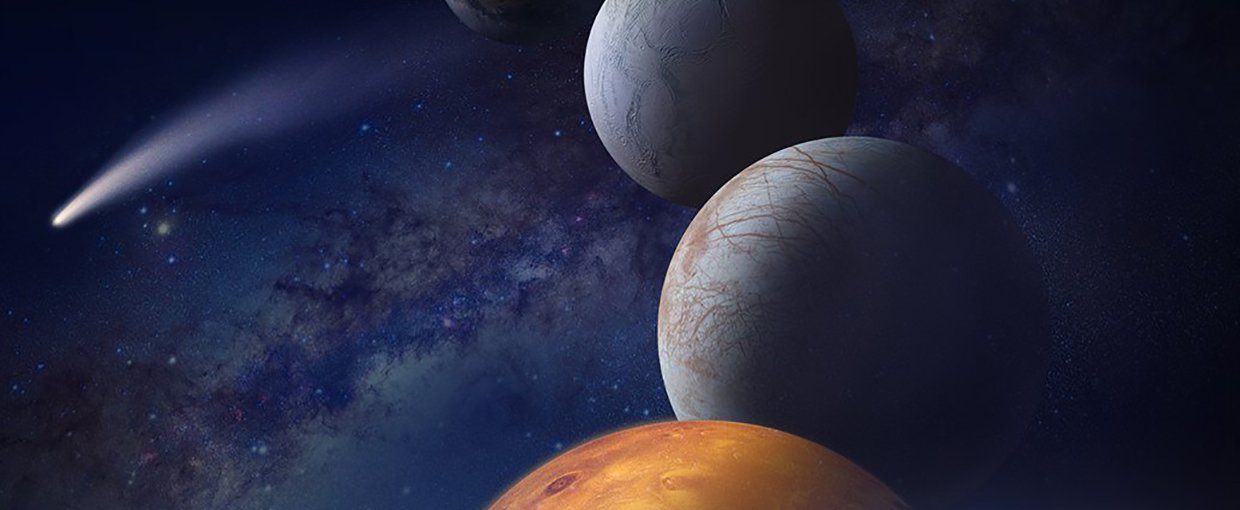2014 Selections for the Astrobiology Program Early Career Collaboration AwardMetthieu Galvez, Carnegie Institution of Washington
Working with Craig Manning at UCLA on “The solubility of rocks in metamorphic fluids: A model for rock-dominated conditions to upper mantle pressure and temperature,” published in Earth and Planetary Science Letters.
Pedro Montalvo Jimenez, University of Puerto Rico
Working with John Valley at the University of Wisconsin on Identification of Detrital Shocked Minerals.
Johanna Teske, Carnegie Institution of Washington
Travel to the Mauna Kea Observatory to work with Steve Howell (NASAARC), to the Lowell Observatory to work with Evgenya Shkolnik and to the University of California, Santa Cruz to work with Jonathan Fortney, in support of her project, Modeling exoplanet atmospheres/stellar composition.
Xiangli Wang, Yale University
Working with Mukul Sharma at Dartmouth College, examining Time constraints on the origin of oxygenic photosynthesis.
Dylan Wilmeth, University of Southern California
Travel to University of Johannesburg, to work with Nicolas Beukes Investigating local oxygenation of a Neoarchean lake environment, South Africa.
“Neoarchean (2.7 Ga) lacustrine stromatolite deposits in the Hartbeesfontein Basin, Ventersdorp Supergroup, South Africa: Implications for oxygen oases,” published in Precambrian Research
Giada Arney, University of Washington
Working with Shawn Domagal-Goldman at the Goddard Space Flight Center, Observer Simulations for Future Exoplanet-Related Missions.
“Pale Orange Dot: The Spectrum and Habitability of Hazy Archaen Earth”, published in Astrobiology
“Is the Pale Blue Dot Unique? Optimized Photometric Bands for Identifying Earth-Like Exoplanets”, published in the Astrophysics Journal.
Paul Brandon Carroll, California Institute of Technology
Working with Brett McGuire of the National Radio Astronomy Observatory, at the Parkes Radio Telescope, on the “Origin of the Homochirality Of Life,” published in Science.
Jemma Davidson, Carnegie Institution of Washington
Travel to visit Dr. A. L. David Kilcoyne, at Lawrence Berkeley National Laboratory’s Advanced Light Source Synchrotron, in support of her project, Spectral Analyses of Extraterrestrial Organic Matter.
Michael Line, University of California, Santa Cruz
Working with Victoria Meadows at the University of Washington, to determine the detection significances of molecules in hot-Jupiter atmospheres, and to set up an atmospheric retrieval pipeline, and with Mark Swain, at the Jet Propulsion Laboratory, to refine the mission specifications and goals of the FINESSE mission.
Eric Parker, Georgia Institute of Technology
Travel to work with Jason Dworkin at the Goddard Space Flight Center, “Investigating Geochemical Condition of the early Earth”
Mary Beth Wilhelm, Georgia Institute of Technology
Travel to work with Jennifer Eigenbrode at the Goddard Space Flight Center and Roger Summons at the Massachusetts Institute of Technology, to study Lipid Biomarker Preservation in the Hyperarid Core of the Atacama Desert.

